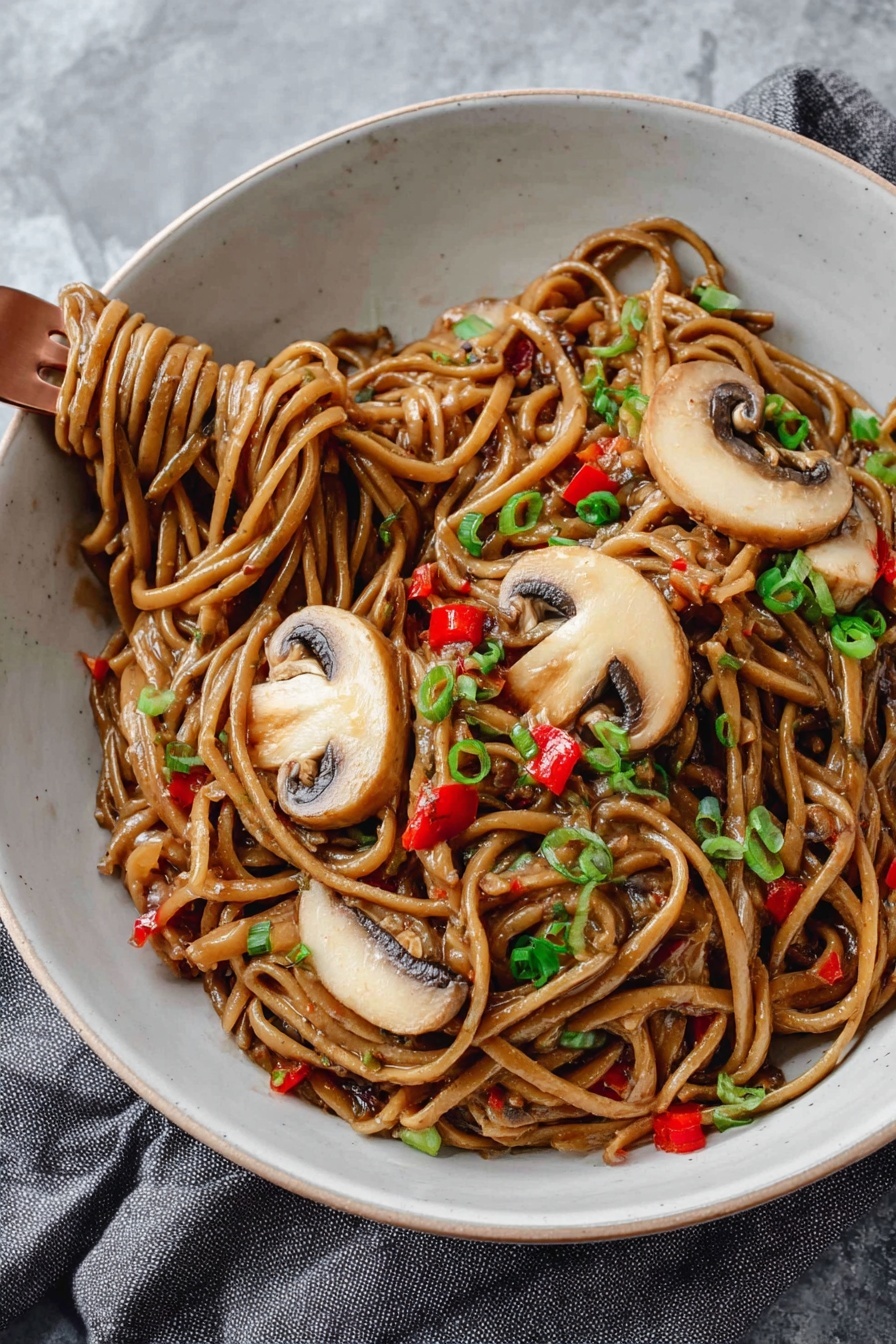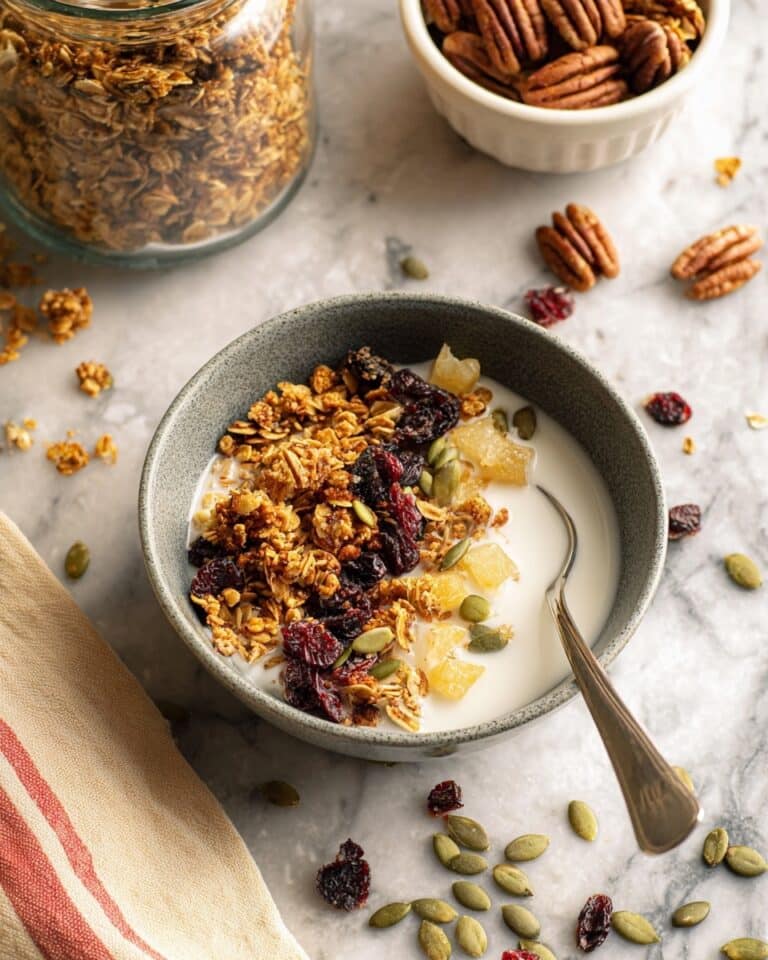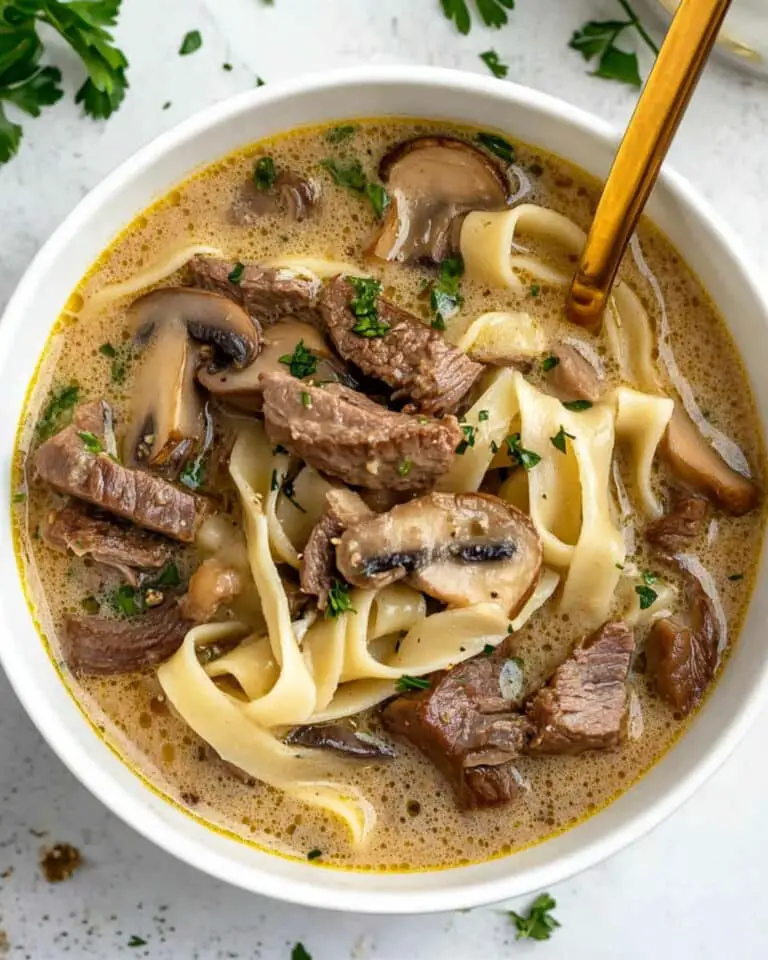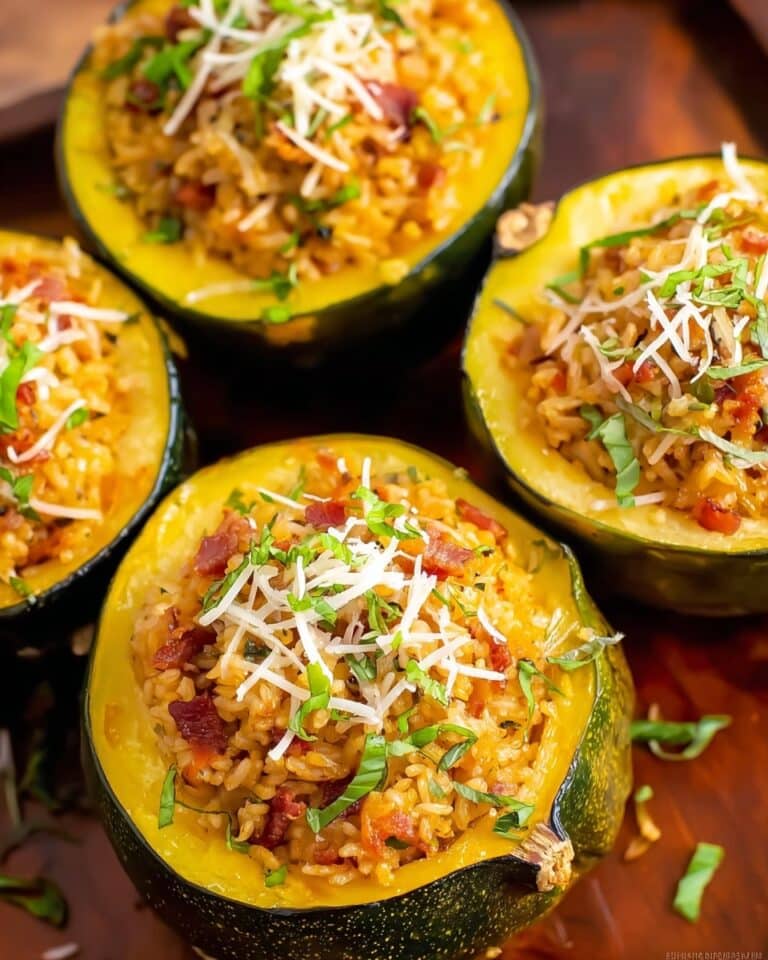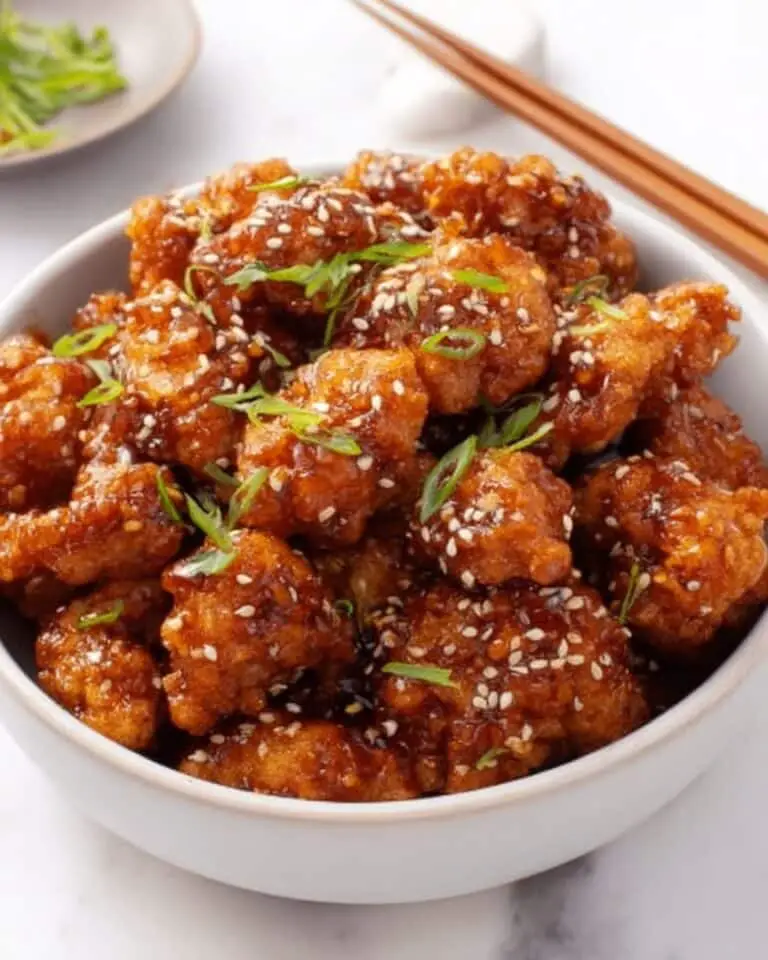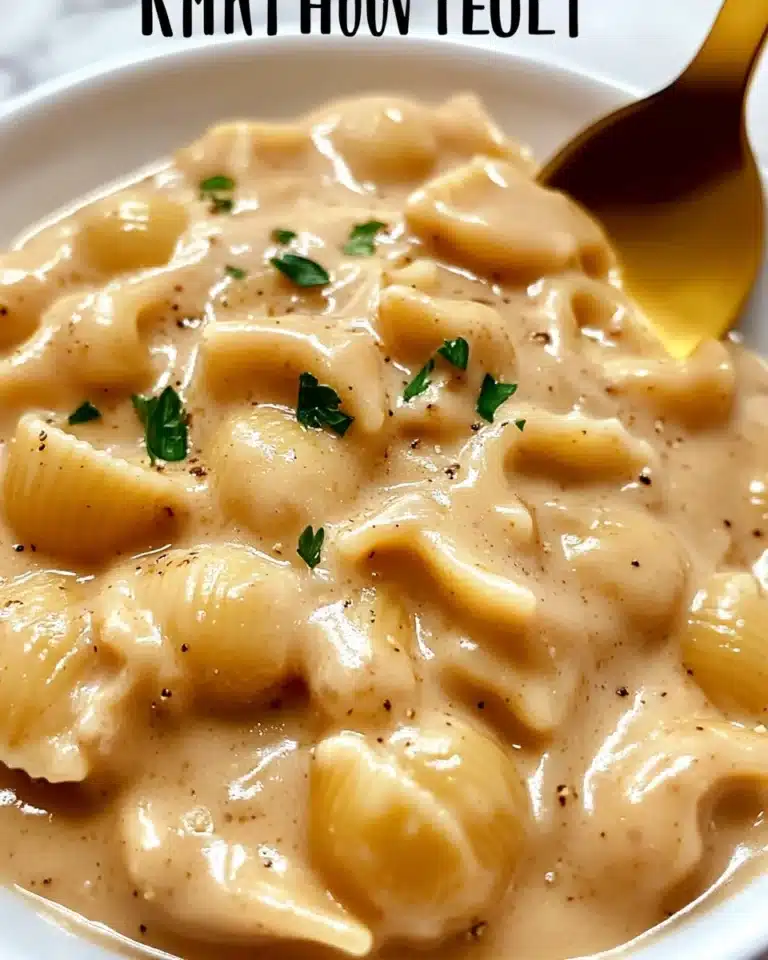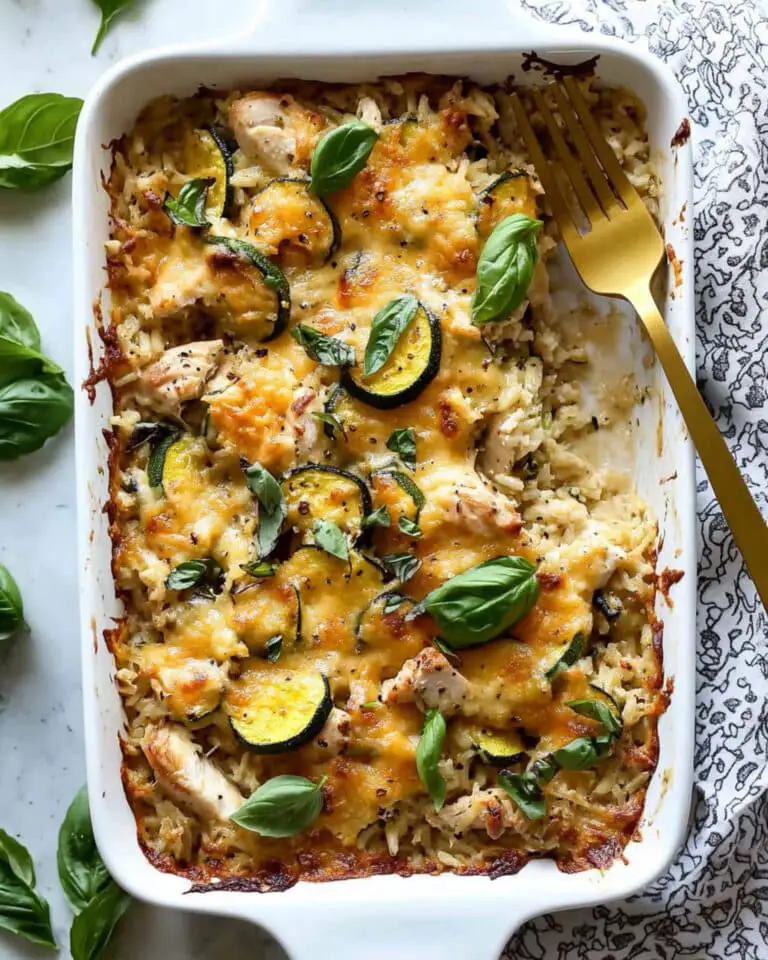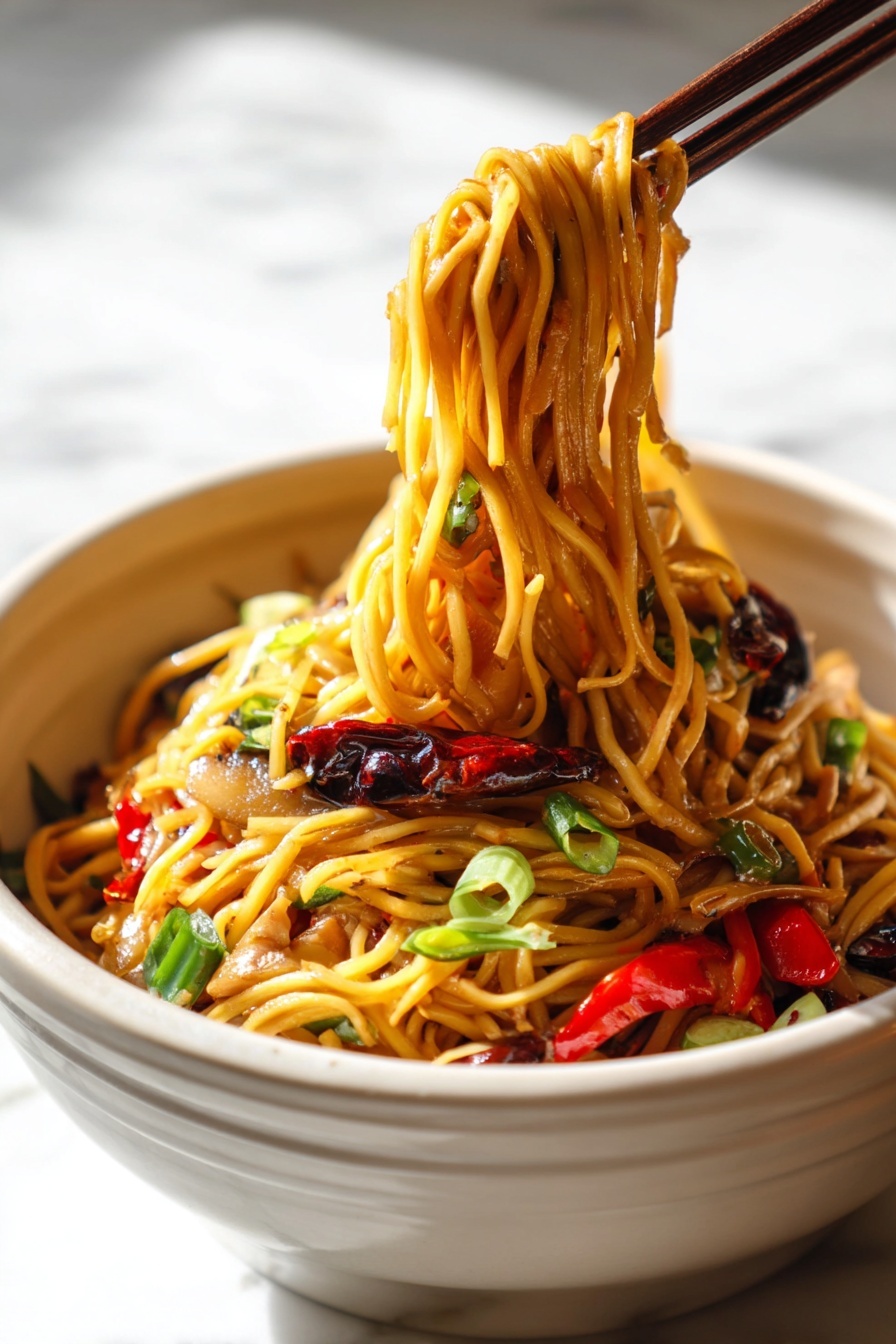
If you’re looking for a fun, flavorful twist on classic pasta with a spicy kick and mouthwatering umami depth, then you’re going to love this Vegan Kung Pao Pasta with Mushrooms Recipe. It’s the kind of dish that surprises your taste buds by blending the boldness of Kung Pao sauce with the comfort of your favorite noodles, all while being completely plant-based. Trust me, this recipe has become a go-to for weeknight dinners and impressing friends alike—so keep reading, because I’m going to walk you through everything you need to make this fan-freaking-tastic meal!
Why You’ll Love This Recipe
- Bursting with Flavor: The bold, tangy Kung Pao sauce perfectly complements the mushrooms and pasta for a rich, satisfying dish.
- Simple and Quick: Ready in just about 20 minutes, it’s perfect when you want something delicious without the fuss.
- Flexible Ingredients: Whether you’ve got linguine, spaghetti, or your favorite noodle, plus whatever mushrooms on hand, it all works beautifully.
- Plant-Based and Powerful: Completely vegan and still packed with protein and that addictive umami flavor.
Ingredients You’ll Need
When it comes to this Vegan Kung Pao Pasta with Mushrooms Recipe, I love how the ingredients balance spicy, savory, and a little sweet for a ridiculously tasty sauce that clings to every strand of pasta. Shopping tip: look for good-quality dried pasta and fresh mushrooms—king oyster mushrooms add amazing texture and flavor here.
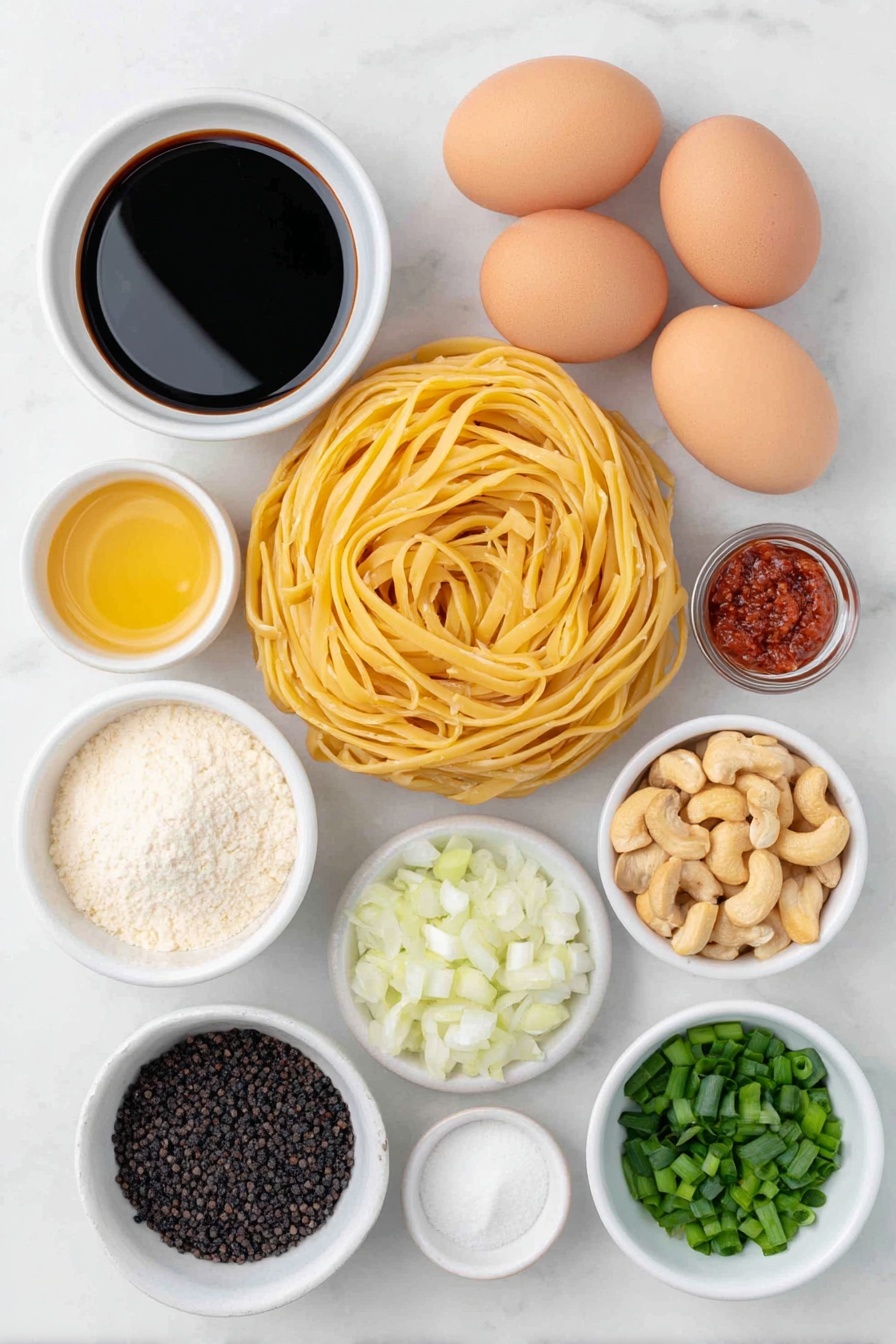
- Water: Needed for the sauce base and cornstarch slurry, keeps everything smooth.
- Sugar: Balances the spicy and tangy notes; you can dial this up or down based on your sweetness preference.
- Soy sauce: Adds essential savory depth; I recommend a good gluten-free brand if needed.
- Dark mushroom soy sauce: Optional but adds beautiful color and a deeper mushroom flavor.
- Doubanjiang (chili bean paste): The star of the spicy sauce—make sure to grab a good quality one, or sub with your favorite chili paste.
- Chinese black vinegar (Chinkiang vinegar): Adds that unique tanginess; it’s a kitchen game changer for Asian-style sauces.
- Shaoxing wine: Optional, but I love the extra depth it brings. If you don’t have it, sake or even dry sherry works well.
- Szechuan peppercorns: Crushed, they bring that signature tingly, numbing kick that lifts the whole dish.
- Cornstarch: For thickening the sauce to the perfect glossy consistency.
- Dry pasta: Linguine or spaghetti are my favorites because they hold the sauce so well.
- Salt: Essential to season to taste.
- Olive oil & neutral oil: For cooking and sautéing the veggies without overpowering the sauce.
- Onion & scallions: Adds sweetness and fresh bite—be sure to separate the white and green parts as they go in at different times.
- Chopped mushrooms: King oyster mushrooms bring meaty texture, but feel free to mix varieties.
- Red bell pepper: Adds sweet crunch and color contrast.
- Dried chiles: Optional, but I love that extra smoky heat.
- Roasted cashews or peanuts: Bring crunch and richness—don’t skip these if you can!
- Sesame oil: A drizzly finish for warmth and that nutty aroma.
Variations
I’m all for making this Vegan Kung Pao Pasta with Mushrooms Recipe your own, so don’t hesitate to tweak it depending on what you have or your mood. Over time, I’ve tried a few swaps that really change things up while keeping that signature flavor.
- Add More Veggies: My favorite has been throwing in snap peas or baby bok choy for extra crunch and freshness—perfect for when I want something a little greener.
- Heat Adjustments: If you like it spicier, add more doubanjiang or some fresh chili slices; for a milder version, simply reduce or skip the dried chiles.
- Try Different Mushrooms: I once made it with shiitake and cremini mushrooms, and it was equally delicious—each variety brings its own earthiness.
- Noodle Alternatives: If you want a gluten-free option, brown rice or chickpea pasta work surprisingly well with the sauce.
How to Make Vegan Kung Pao Pasta with Mushrooms Recipe
Step 1: Prepare the Flavor-Packed Sauce
Start by mixing all the sauce ingredients in a bowl—water, sugar, soy sauce, dark mushroom soy sauce if you’re using it, doubanjiang, black vinegar, Shaoxing wine, and crushed Sichuan peppercorns. I love stirring it a few times and tasting along the way to find the perfect balance of spicy, tangy, and a little sweet. Keep it an extra spicy kick if that’s your vibe! In a separate small bowl, combine the cornstarch and room temperature water to make a smooth slurry and set both aside.
Step 2: Cook Your Pasta Perfectly
Bring a large pot of water to boil, adding a generous pinch of salt and a splash of oil—this keeps your noodles from sticking later on. Cook your pasta until it’s al dente or just chewy enough, because it’ll soak up the sauce nicely. Don’t forget to save some pasta water before you drain it; that little starchy magic can rescue your sauce if it’s too thick or dry.
Step 3: Sauté the Veggies and Mushrooms
Heat a pan over medium heat and add a tablespoon of neutral oil. Toss in the diced onion and the white parts of your scallions, stirring until fragrant and softened. Then add in your chopped mushrooms and diced red bell pepper. Saute everything together until the mushrooms release their moisture and start browning—this adds a ton of flavor. If you’re using dried chiles, add them here to infuse that smoky heat into the oil.
Step 4: Bring It All Together with the Sauce
Pour the prepared sauce into the pan, letting it come to a gentle boil. Once it’s bubbling, add the cooked pasta right in and stir it all around. Give your cornstarch slurry a quick stir to ensure it’s smooth, then drizzle it evenly over the pasta and veggies. Keep stirring over medium heat until the sauce thickens and beautifully coats every noodle. This step is where the magic happens—the sauce becomes glossy and rich, perfectly clinging to the pasta.
Step 5: Finish and Serve
After the sauce has thickened, toss in your roasted cashews or peanuts along with the green parts of the scallions. Taste and adjust with a pinch of salt or a little more sugar if you want to balance heat and sweetness perfectly. If you plan to save some for leftovers, splash in a bit of reserved pasta water so the noodles won’t dry out as they cool. Turn off the heat, drizzle with sesame oil, and top with extra pan-fried mushrooms if you’re feeling fancy. Plate it while it’s hot and get ready to dig in!
Pro Tips for Making Vegan Kung Pao Pasta with Mushrooms Recipe
- Timing is Everything: Cook your pasta just shy of al dente since it will soak up sauce and continue cooking slightly in the pan.
- Balance Your Flavors: Adjust sugar, vinegar, and chili paste little by little; it’s easier to add than fix later!
- Use Freshly Crushed Szechuan Peppercorns: Grinding your own peppercorns makes a noticeable difference in aroma and that iconic numbing sensation.
- Don’t Skip the Pasta Water: A splash of saved cooking water can rescue a thick or clumpy sauce and keep your noodles perfectly saucy.
How to Serve Vegan Kung Pao Pasta with Mushrooms Recipe
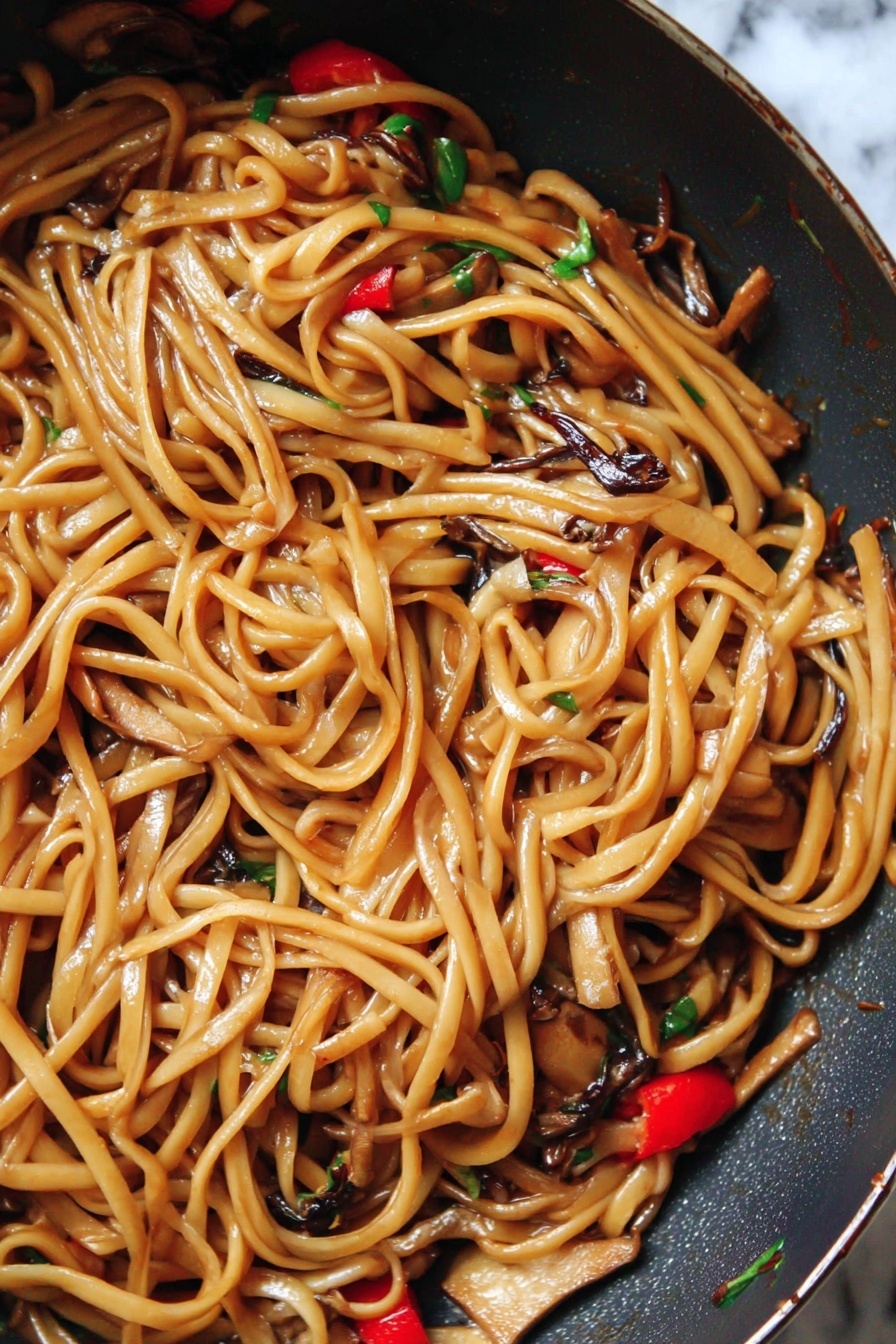
Garnishes
I’m a big fan of sprinkling a handful of roasted cashews or peanuts on top for that crunchy contrast, plus a little extra green onion for freshness and color. Sometimes, I’ll add a drizzle of sesame oil just before serving to amp up the aroma—don’t underestimate how that simple touch elevates the whole dish.
Side Dishes
This pasta stands strongly on its own, but if you want to round out the meal, I love pairing it with a crisp cucumber salad or steamed garlic broccoli for bright, fresh balance. A simple miso soup is also a fantastic traditional accompaniment that warms the soul.
Creative Ways to Present
For special occasions, I like to plate this Kung Pao pasta in a large shallow bowl, garnished with extra mushrooms and chopped peanuts scattered artfully on top. Add a few edible flowers or microgreens if you want to wow guests visually. It’s surprisingly festive and pairs well with a crisp white wine or jasmine tea!
Make Ahead and Storage
Storing Leftovers
When I have leftovers of this Vegan Kung Pao Pasta with Mushrooms Recipe, I store them in an airtight container in the fridge for up to 3 days. I add a splash of water or broth before reheating to keep the pasta saucy and prevent dryness.
Freezing
Freezing this pasta isn’t my top recommendation because the texture of the pasta and mushrooms can suffer a bit, but if you do freeze it, portion into freezer-safe containers and thaw overnight in the fridge. Reheat gently to preserve the flavors best.
Reheating
To reheat, toss your pasta in a skillet over medium-low heat with a splash of water or broth, stirring gently until warmed through. Avoid the microwave if you want to maintain that glossy sauce texture and tasty bite.
FAQs
-
Is this Vegan Kung Pao Pasta with Mushrooms Recipe spicy?
Yes, the recipe features doubanjiang and dried chiles, which add a noticeable but balanced heat. However, you can easily adjust the spice level by reducing or skipping the chiles or chili bean paste according to your heat tolerance.
-
Can I use other types of pasta besides linguine or spaghetti?
Absolutely! Any pasta that holds sauce well will work beautifully. Penne, fettuccine, or even rice noodles can be great alternatives depending on your dietary preferences.
-
Where can I find doubanjiang and Sichuan peppercorns?
You can find doubanjiang and Sichuan peppercorns in most Asian grocery stores or online. Investing in quality versions makes a big flavor difference in this dish.
-
Can I add protein like tofu or tempeh?
Definitely! Cubed and pan-fried tofu or tempeh make excellent additions if you want to boost protein and make this dish heartier.
-
How do I store leftovers to keep them fresh?
Store leftovers in a sealed container in the refrigerator for up to 3 days. Adding a splash of water before reheating helps maintain the saucy consistency.
Final Thoughts
I absolutely love how this Vegan Kung Pao Pasta with Mushrooms Recipe brings together bold Asian flavors with the comforting familiarity of pasta—it’s become one of my favorite quick dinners to whip up. The first time I tried it, I was blown away by how saucy and umami-packed it was, making me rethink everything I thought I knew about Kung Pao dishes and pasta. I’m excited for you to try it too, and I’m confident it’ll become a staple in your kitchen just like it has in mine. Dive in and enjoy every delicious bite!
Print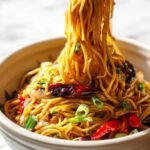
Vegan Kung Pao Pasta with Mushrooms Recipe
- Prep Time: 5 minutes
- Cook Time: 15 minutes
- Total Time: 20 minutes
- Yield: 2 servings
- Category: Main Course
- Method: Stovetop
- Cuisine: Chinese-Italian Fusion
- Diet: Vegan
Description
A flavorful and spicy Vegan Kung Pao Pasta combining the bold and tangy tastes of traditional Kung Pao sauce with tender pasta and savory mushrooms. This dish is saucy, umami-rich, and perfect for a quick and satisfying vegan meal.
Ingredients
Sauce Ingredients
- 1/2 cup water
- 1.5-2 tbsp sugar (adjust according to desired sweetness)
- 1 tbsp soy sauce
- 1 tsp dark mushroom soy sauce (optional for color)
- 1 tbsp doubanjiang (or chili bean paste)
- 2 tsp Chinese black vinegar (or Chinkiang vinegar)
- 1 tbsp Shaoxing wine (or other rice wine like sake, optional)
- 1/2-1 tsp Szechuan peppercorns (crushed)
Slurry
- 1/2 tbsp cornstarch
- 1 tbsp room temperature water
Main Ingredients
- 4.5 oz dry pasta of choice (linguine or spaghetti preferred)
- Salt, to taste
- Olive oil, as needed
- 1 tbsp neutral oil (for cooking)
- 1/2 small onion, diced
- 2 scallions or green onions (sliced into 2″ pieces, white and green parts separated)
- 1 cup chopped mushrooms (king oyster mushrooms recommended)
- 1/2 small red bell pepper, diced
- 3 dried chiles (arbor chiles, optional)
- Roasted cashews or peanuts (optional)
- Green parts of scallion or green onion (for garnish)
- Drizzle of sesame oil
Instructions
- Prepare the Sauce: In a bowl, mix together water, sugar, soy sauce, dark mushroom soy sauce, doubanjiang, Chinese black vinegar, Shaoxing wine, and crushed Szechuan peppercorns. Adjust seasoning to your taste for the right balance of sweetness and spice.
- Make the Cornstarch Slurry: In a separate small bowl, combine cornstarch and room temperature water, stirring until the cornstarch is fully diluted. Set aside.
- Cook the Pasta: Bring a pot of water to a boil. Add a generous amount of salt and a splash of oil. Cook the pasta until al dente or chewy according to the package instructions. Drain and reserve some pasta water for later use.
- Sauté Vegetables: Heat a pan over medium heat and add neutral oil. Sauté diced onions, white parts of scallions, bell pepper, and chopped mushrooms until cooked through. Add dried chiles if using and sauté briefly to release their flavor.
- Add Sauce to Pan: Pour the prepared sauce mixture into the pan with the vegetables. Allow it to simmer over medium heat until it starts boiling.
- Combine Pasta and Sauce: Add the cooked pasta to the pan. Stir the cornstarch slurry again to prevent settling and pour it over the pasta. Mix and cook for several minutes over medium heat until the sauce thickens and coats the pasta nicely.
- Finish and Season: Let the pasta absorb some sauce for a few more minutes. Stir in roasted cashews or peanuts, green scallion parts, and adjust salt or sugar as needed. If reheating later, add reserved pasta water to loosen the sauce.
- Serve: Turn off heat and optionally top with extra pan-fried mushrooms. Drizzle sesame oil before serving. Enjoy the pasta hot for best flavor.
Notes
- This Kung Pao Pasta is saucy and umami-rich, great with mushrooms or other mixed vegetables.
- Adjust the spice level by varying the amount of doubanjiang and dried chiles.
- You can swap doubanjiang for chili bean paste with similar flavor.
- Adding extra veggies and mushrooms can enhance the texture and flavor.
- Save some pasta water to loosen the sauce when reheating leftovers.
Nutrition
- Serving Size: 1 serving
- Calories: 406 kcal
- Sugar: 15 g
- Sodium: 689 mg
- Fat: 9 g
- Saturated Fat: 1 g
- Unsaturated Fat: 7 g
- Trans Fat: 1 g
- Carbohydrates: 69 g
- Fiber: 5 g
- Protein: 12 g
- Cholesterol: 0 mg

